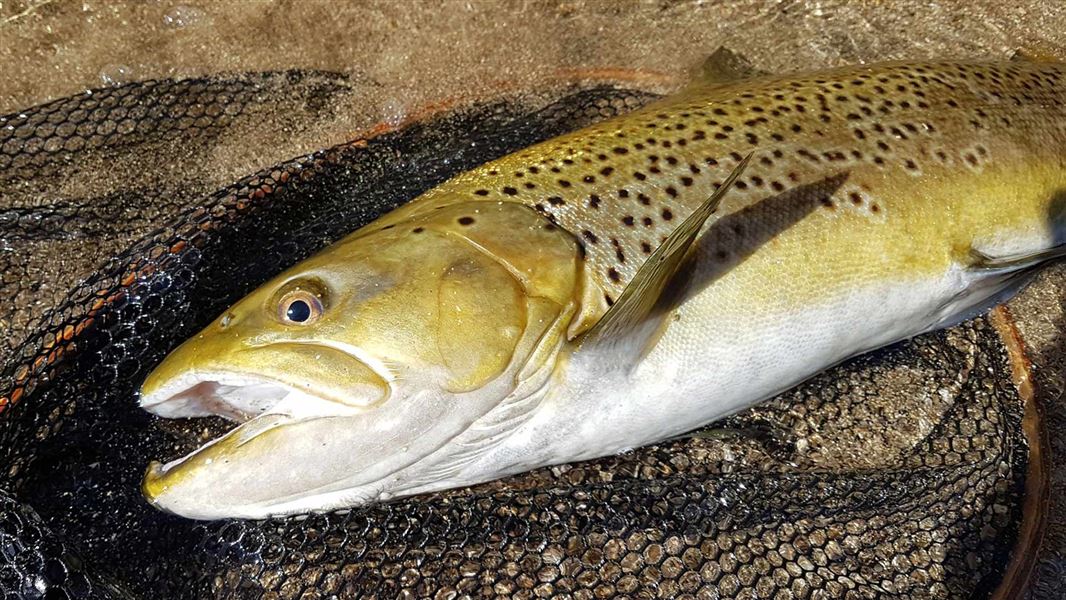Archived content: This media release was accurate on the date of publication.
Date: 18 April 2019
Traditionally the Taupō region has been thought of as a winter rainbow trout fishery. Brown trout were considered a reclusive fish only caught by the few dedicated anglers who were willing to invest considerable time and effort to understand them. However, with more people catching more brown trout that view could be changing.
The Taupō Fishery Management Team thought it would be valuable to talk to local angling retailers and gather their thoughts and also consider if fishery science can shed more light on the situation.
It was clear from conversations with retailers that anglers have been catching plenty of brown trout. In fact, one suggested the region could develop into a genuine summer brown trout fishery with international appeal. While this view was challenged by some – who pointed to the attraction of South Island wilderness brown trout fishing - clearly there is capacity for visiting anglers to explore this opportunity here.
When asked about brown trout abundance, opinions varied. Many believe there have been more fish present in local rivers in recent years, particularly this year, while others suggest the numbers are within expected levels and any changes simply reflect yearly fluctuations.
It was suggested that willow removal in the lower reaches of the Tongariro River had encouraged trout to hold further up-stream, including the popular fishing pools which made them more accessible to anglers. While this could be a factor on the Tongariro it does not explain other locations such as the Waitahanui where anglers also caught good numbers of brown trout.
The good fishing this year was also attributed to the long hot dry summer, which was accompanied by massive hatches of cicadas, especially around the Tongariro River where their numbers regularly reached deafening levels. Big brown trout can become fixated on protein packed cicadas, so a well presented artificial can be a highly effective method. A very visual and exciting way to catch trout and an approach that more people are looking to try.
Perhaps this offers another explanation for the increase in brown trout being caught here. More anglers are enjoying the challenge of trying to catch a brown trout and they are getting better at it. Of particular note, some local guides have been particularly successful at introducing anglers to brown trout fishing and regularly share their experiences on social media. The role of social media could be very significant. Platforms such as YouTube carry numerous video clips of anglers catching big browns in the Taupō region. The most popular YouTube film makers often take the viewer through the entire process; location, techniques, spotting trout, casting, hooking, landing and releasing the fish – a highly accessible and valuable introduction to fishing for brown trout.
So, what does the science say? Fishery science data confirms brown trout numbers fluctuate considerably over the years. For example, spawning trap data from 2008 reveals a low point (251 fish) while 2015 was a high (921). Any thought that browns are replacing rainbows can be dismissed. To put things into context the numbers of rainbows recorded within the same period - 2008 and 2015 - were 3,099 and 2,573, respectively.
The scientific evidence confirms that in terms of fish abundance Taupō is predominantly a rainbow trout fishery and will continue to be so, even in the summer. However, the growing attraction of fishing for brown trout is undeniable.
To conclude, Brendan Matthews, in his 2003 book Volcanic Trout said, “… Lake Taupo has one of the most significant populations of large browns anywhere in New Zealand and the quality of the brown trout fishery is probably one of the region’s best-kept secrets.”
It looks like the secret is out, courtesy of YouTube and social media.
